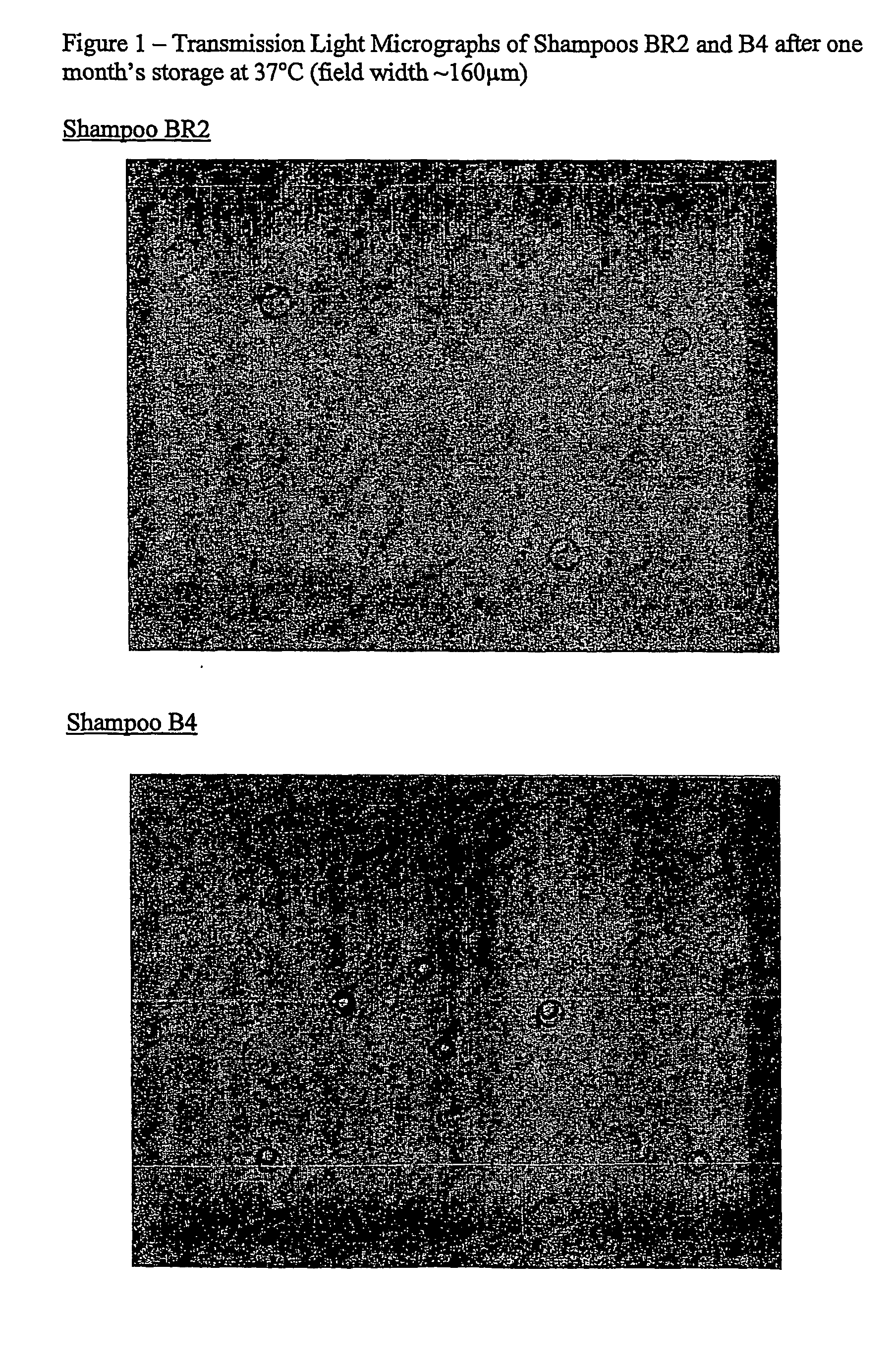Compositions comprising encapsulated material
a technology of encapsulated materials and compositions, applied in detergent compositions, detergent compounding agents, cosmetics, etc., can solve problems such as instability problems, and achieve the effect of increasing the weight ratio
- Summary
- Abstract
- Description
- Claims
- Application Information
AI Technical Summary
Benefits of technology
Problems solved by technology
Method used
Image
Examples
reference example 1
[0068] The following example illustrates the formation of a standard polycondensation microcapsule based on melamine / formaldehyde polymer. A solution of 66 g of a 10% solution of Versa TL502 (a sodium polystyrene sulphonate) from National Starch and Chemical Company, Bridgewater, USA (Versa TL is a Trade Mark) was added to 130 g of distilled water and adjusted to a pH of 4.5 using a 20% solution of sodium hydroxide. Separately, a 40% solution of melamine in 37% formaldehyde was prepared. 100 g of perfume A (the “Internal Phase”) were then added to the anhydride solution, which was maintained under continuous agitation to allow the formation of an emulsion of the perfume in water. 72 g of the melamine formaldehyde solution were then added. The emulsion was heated to 55° C. in a water bath and held there for two hours under continuous agitation and allowed to cool overnight. The capsules produced by this method had a mean particle size of 8 μm with a perfume content of 27% in the caps...
example 1
[0069] This example illustrates the formation of a coating of polyvinyl pyrrolidone on the inner surface of a capsule wall. 10 g of polyvinylpyrrolidone (Luviskol K-90, ex BASF) were dissolved in 90 g of isopropyl alcohol. 12 g of this resulting solution was then dissolved in 88 g of perfume A. The resultant mixture was then agitated and warmed to 35° C. for eight hours to form a clear homogeneous solution. This solution was then used as the Internal Phase to produce capsules by the method of Reference Example 1. The resultant capsules had a mean particle size of 6 μm with a perfume content of 24.2% in the capsule slurry.
example 2
[0070] This example illustrates the formation of a coating of silicone fluid on the inner surface of a capsule wall. 390 g of perfume A was added to a laboratory mixing vessel and mixed with 24 g of polysiloxane fluid (Dow Corning Silicone DC200 / 100). This mixture was then emulsified with a Silverson mixer for one hour. 100 g of the resultant emulsion was then used as the Internal Phase to produce capsules by the method of Reference Example 1. The resultant capsules had a mean particle size of 10 μm with a perfume content of 25.6% in the capsule slurry.
PUM
 Login to View More
Login to View More Abstract
Description
Claims
Application Information
 Login to View More
Login to View More - R&D
- Intellectual Property
- Life Sciences
- Materials
- Tech Scout
- Unparalleled Data Quality
- Higher Quality Content
- 60% Fewer Hallucinations
Browse by: Latest US Patents, China's latest patents, Technical Efficacy Thesaurus, Application Domain, Technology Topic, Popular Technical Reports.
© 2025 PatSnap. All rights reserved.Legal|Privacy policy|Modern Slavery Act Transparency Statement|Sitemap|About US| Contact US: help@patsnap.com

